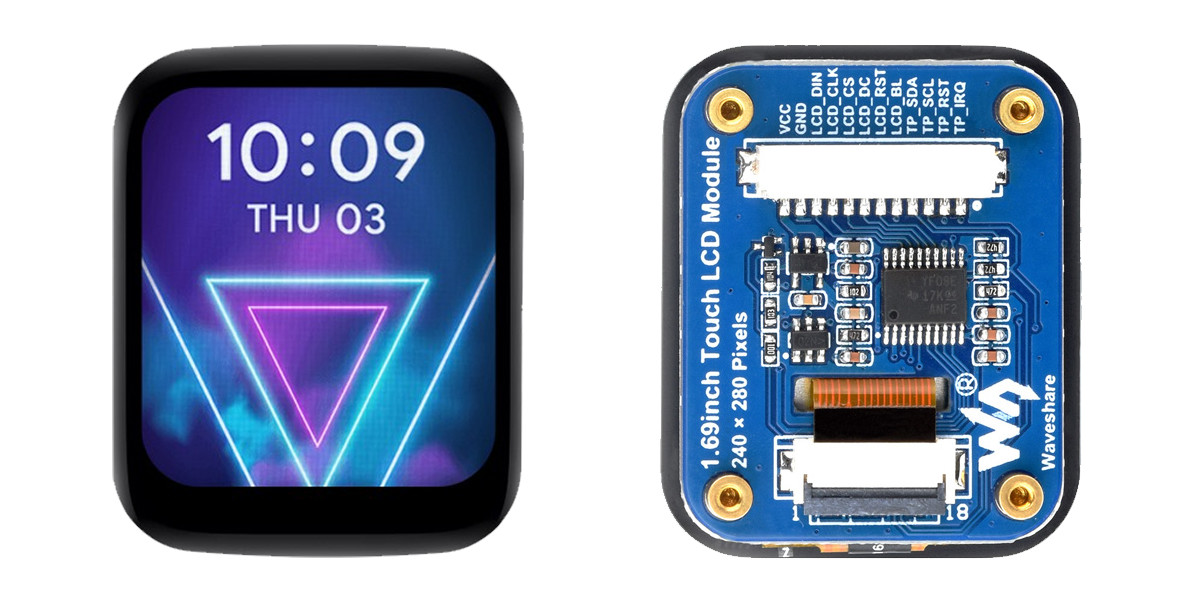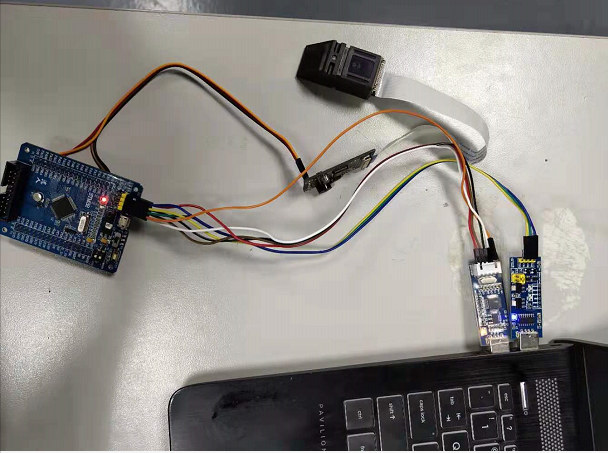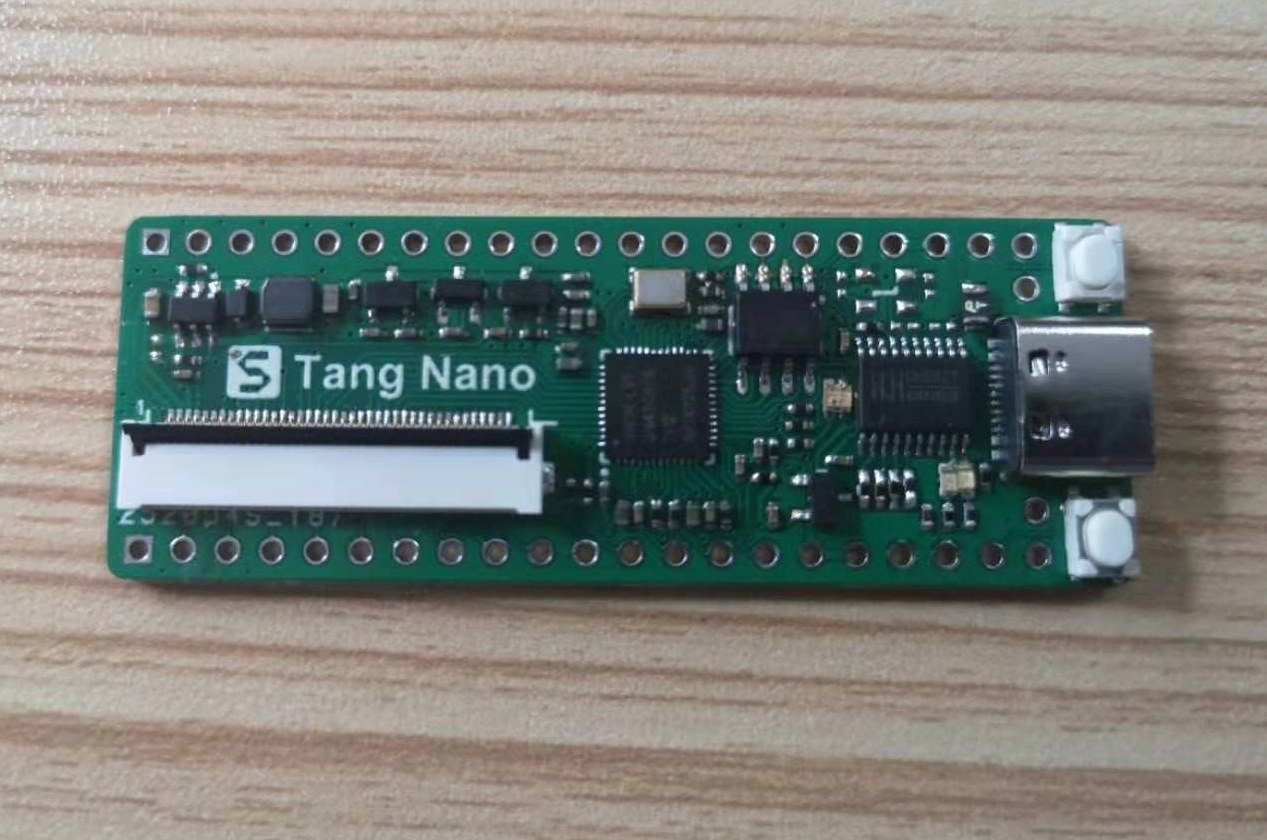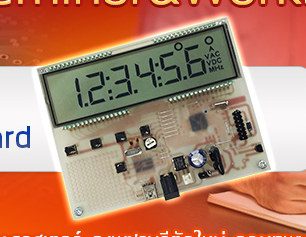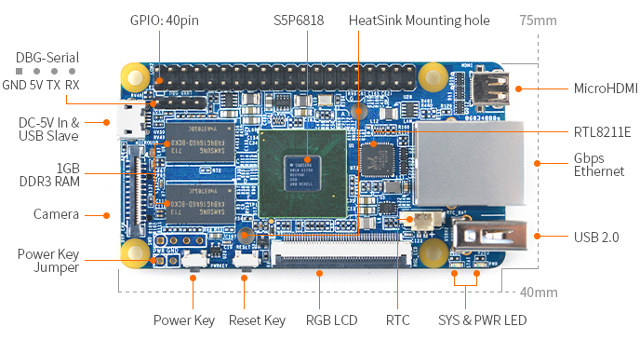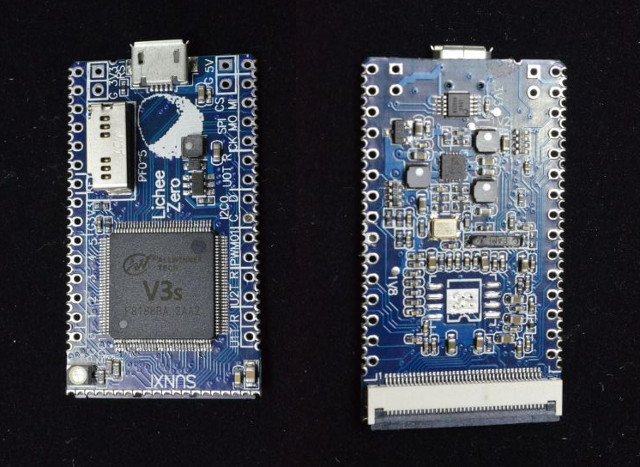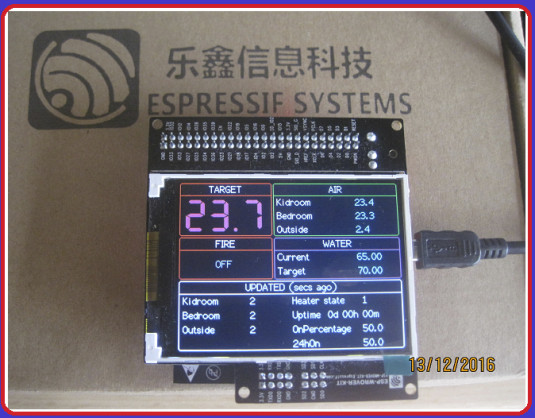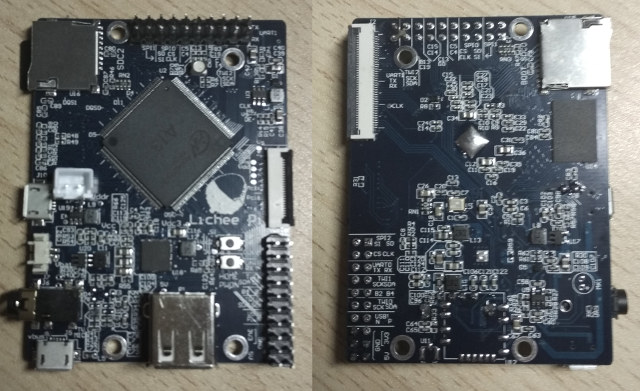The Waveshare 1.69-inch IPS touch LCD is a 1.69-inch rounded display with 240×280 resolution and a 262K color range. The display driver (ST7789V2) and touch controller (CST816T) are integrated on-board and rely on SPI and I2C interfaces that make it compatible with popular platforms such as Raspberry Pi, Arduino, ESP32, STM32, and more. Previously we have covered many similar display modules like the MaTouch ESP32-S3, T-RGB ESP32-S3, and ESP32-S3 Round SPI TFT. Feel free to check these out if you are looking for a specific rounded display product. Waveshare 1.69-inch IPS touch LCD specifications Display 1.69-inch round LCD with 240×280 resolution and IPS panel. 262K color depth Display Driver – ST7789V2 SPI display driver Touch Control – CST816T I2C capacitive touch controller for responsive input. Onboard Logic Level Converter – Onboard voltage translator for 3.3V/5V power, works with Raspberry Pi, ESP32-S3, Raspberry Pi Pico, Arduino, STM32, and more. Dimensions – 41.13 x 33.13 […]
Fingerprint Identification with STM32 MCU and Serial TFT LCD Module
CNXSoft: This is a guest post by Amy working for STONE Technology, a company specializing in industrial liquid crystal display modules This month, I planned to develop a fingerprint door lock project. When I selected the fingerprint identification module, the project was suspended. However, I thought that since the fingerprint identification module had been purchased, I would simply test it. This fingerprint module can be easily purchased online, connected over UART to an MCU board. It supports fingerprint scanning, fingerprint entry, fingerprint comparison, and fingerprint deletion. Since the fingerprint module manufacturer provides a demo program for STM32F103 series microcontrollers, I bought a small development board based on STM32F103C8T6. The demo program of the fingerprint module uses LED lights to prompt the user to enter the fingerprint and compare the status (success or failure). But I want to use an LCD display, so I chose a 480×272 resolution serial LCD display. […]
$5 Tang Nano FPGA Board Features GOWIN GW1N “LittleBee” FPGA
Last year, we wrote about Lichee Tang FPGA board powered by Anlogic EG4S20 FPGA and targeting RISC-V development for just under $15. The company, now called Sipeed, has made an even cheaper FPGA board with Tang Nano equipped with GOWIN Semi GW1N FPGA part of the company’s LittleBee family. Sipeed Tang Nano Sipeed Tang Nano specifications: FPGA – Gowin GW1N-1-LV FPGA with 1,152 LUT4, 864 Flip-Flops(FF), 72Kbit Block SRAM, 4x B-SRAM, 96Kbit user flash, 1x PLL, 4x I/O banks System Memory – 64Mbit (8MB) 3.3V PSRAM Display – Standard 40-pin RGB LCD interface with on-board screen backlight driver circuit (default normally open, EN pin can be connected to FPGA) USB – USB Type-C port for download and power supply Expansion – 34 I/O ports and power pins on headers (unpopulated), breadboard-compatible Misc – RGB LED, 2x user buttons, 24MHz crystal oscillator Power Supply – 5V via USB-C port (at least […]
LAPIS ML62Q1622 is a General Purpose 16-bit MCU with an LCD Driver
So this morning I received an email about some seminar & workshop about LAPIS microcontroller, including a free ML62Q1622 evaluation board. OK, good. But wait. Who is LAPIS? I have certainly never seen any projects with Lapis MCUs, and probably have never heard of them. It turns out OKI SEMICONDUCTOR Co.,Ltd. established in 2008 from a spin-off of Oki Electric Industry Co., Ltd, changed the company name in to LAPIS Semiconductor Co.,Ltd in 2011. LAPIS is also part of ROHM Semiconductor group. Anyway, it was a good opportunity to find out more about ML62Q1622 micro-controller, and related evaluation boards & tools. Lapis Semi ML62Q1622 is part of ML62Q1600 group of 16-bit microcontrollers whose block diagram is shown above. ML62Q1622 MCU key features & specifications: CPU – 16-bit RISC CPU (CPU name: nX-U16/100) clocked @ up to 32 MHz Coprocessor for multiplication and division Program Memory – 64Kbyte Data Memory – […]
NanoPi Fire2A & Fire3 Boards Released with Samsung/Nexell Quad & Octa Core Processors
FriendlyElec previously launched NanoPi 2 Fire board powered by Samsung (Nexell) S5P4418 quad core Cortex A9 SoC, mostly interesting because of its small form factor, camera and LCD interfaces. The company has now launched two new boards based on S5Pxx18 processors, namely NanoPi Fire2A powered by S5P4418 SoC, and NanoPi Fire3 based on S5P6818 octa-core Cortex-A53 SoC. Both boards share the same form factor, which remains quite similar to the one of NanoPi 2 Fire, except the HDMI connector now makes place for a micro HDMI port, the USB 2.0 has moved into vertical position, and a few other tweaks have been made to positions of buttons and components. NanoPi Fire2A / Fire3 specifications: SoC Fire2A – Samsung S5P4418 quad core Cortex A9 processor @ up to 1.4GHz, Mali-400MP GPU Fire3 – Samsung S5P6818 octa core Cortex A53 processor @ up to 1.4 GHz, Mali-400MP GPU System Memory Fire2A – 512MB DDR3 […]
$6 LicheePi Zero ARM Board Runs Linux 4.10, Supports Lots of Add-On Boards (Crowdfunding)
We’ve already covered LicheePi One board powered by Allwinner A13 processor, but it was not for sale out of China, and the developers are now back with LicheePi Zero board/module, slightly bigger than an SD card, featuring Allwinner V3s processor, and offered for as low as $6, or $8 with WiFi via an Indiegogo campaign. LicheePi Zero specifications: SoC – Allwinner V3s ARM Cortex A7 processor @ up to 1.2 GHz with an ARM Mali-400 GPU, 512Mbit (64MB) DDR2 on-chip Storage – micro SD card slot, SPI flash (not 100% clear if it will be populated when shipped to backers) Display – FPC40 RGB Connector with support for 800×480 RGB LCD Audio – Audio codec USB – micro USB OTG port Expansion 2x 15 headers with 2.54mm pitch, breadboard friendly with GPIOs, 2x UART, 1x SPI, 2x I2C,ADC, 1x PWM 2x 30 half-holes with 1.27mm pitch with OTG USB,MIPI CSI,EPHY,RGB […]
ESP32-WROVER-KIT Devkit Supports Espressif ESP32 Modules, Includes a 3.2″ LCD Display
Yesterday Olimex wrote a blog post informing us that ESP32-CoreBoard was back in stock, one the many ESP32 boards launched late this year, but still hard to get. The company also mentioned they’d have limited quantity of the new ESP32-WROVER with JTAG and LCD display together with the picture below. ESP32 is quite more powerful than ESP8266 so it makes sense to have an ESP32 development kit with an LCD display. A quick DuckDuckGo search led me to ESP-WROVER-KIT Getting Started Guide, where we can find more details including the overall specifications: Compatible with ESP-WROOM-32 and ESP32-WROVER modules based on ESP32 dual core Tensilica L108 processor clocked at up to 240 MHz with WiFi and Bluetooth LE connectivity Storage – Micro SD slot Display – 3.2″ LCD display connected via SPI USB – 1x micro USB port Expansion 8-pin UART header 6-pin SPI header 48-pin header for I/Os and camera […]
LicheePi One Allwinner A13 ARM Linux Board is Equipped with LCD Display and Camera Interfaces
Allwinner A13 – repackaged as Allwinner R8 – single core Cortex A8 processor is used in $9 C.H.I.P board with 512MB, 4GB storage, WiFi and Bluetooth, and I/Os. Now a Chinese company has created a new Allwinner A13 board called Lichee Pi that appears especially suited to drive LCD displays thanks to its 40-pin LCD RGB connector, but it also comes with WiFi & Bluetooth, a micro SD slot, and some I/Os. Lichee Pi One board (preliminary/tentative) specifications: SoC – Allwinner A13 ARM Cortex A8 processor @ 1.0 GHz with Mali-400 GPU System Memory – 512MB DDR3 RAM Storage – 2x micro SD slot Display Interface – 40-pin RGB LCD connector, with 8080 interface, VGA and LVDS supported via add-on board Camera – 24-pin CSI interface Audio – 3.5mm audio jack Connectivity – Optional 802.11 b/g/n WiFi and Bluetooth via RTL8723BU module (Multiplexed with USB 2.0 host port) USB – […]


